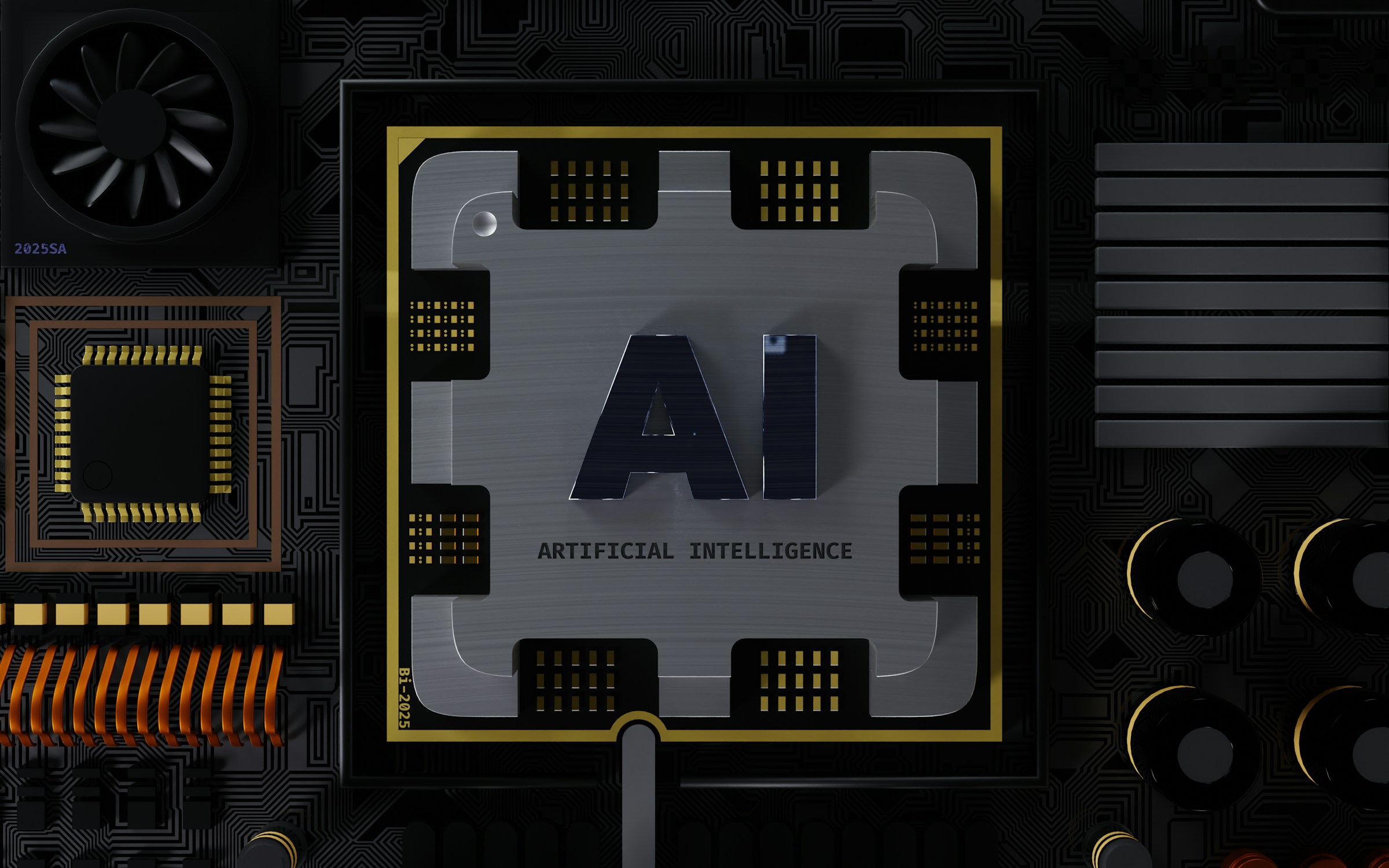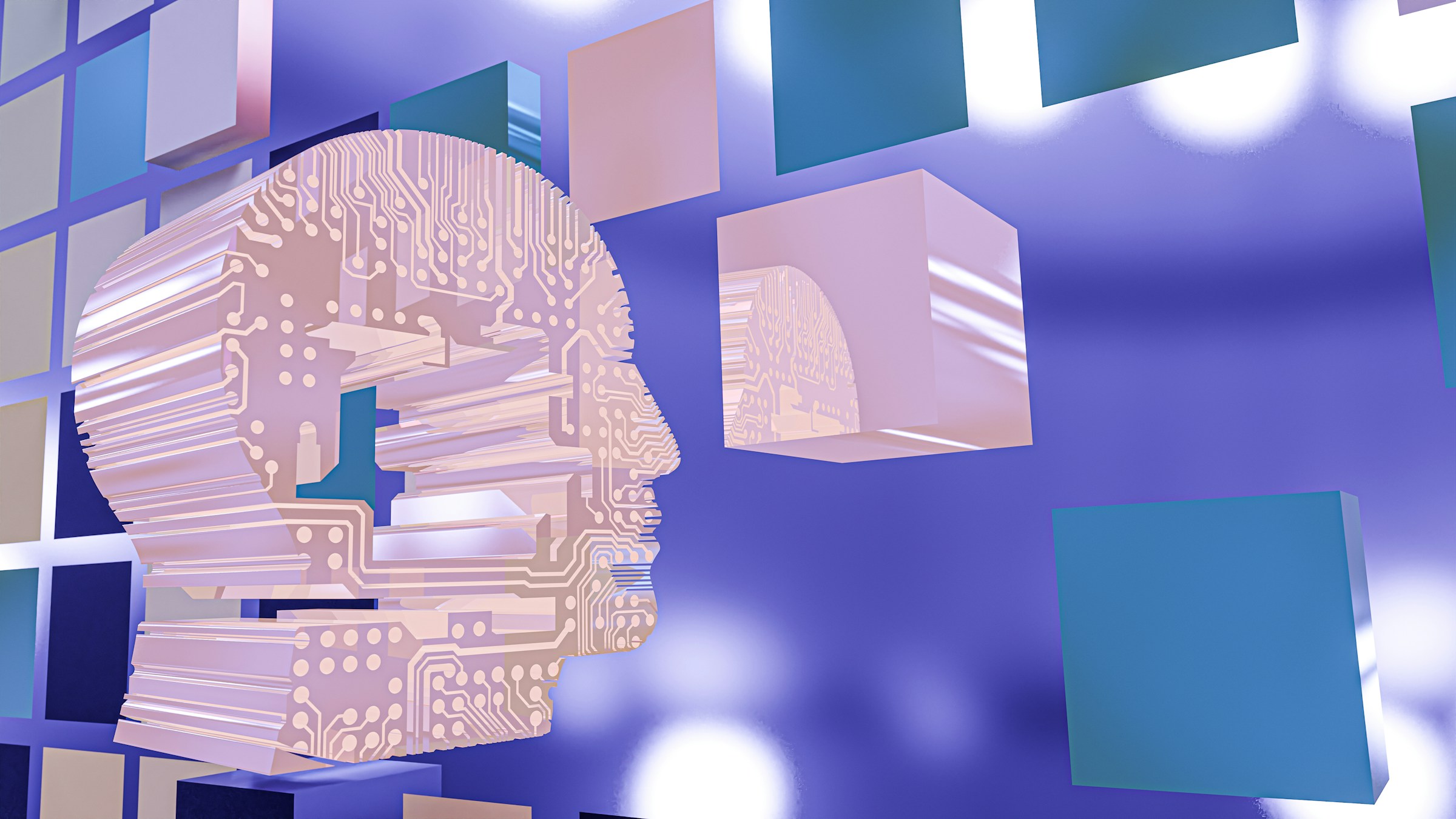Content
As AI systems become more sophisticated, their decision-making processes often become less transparent and more complicated to understand. This can pose significant challenges for users of AI systems, especially in high-stakes contexts like hiring, lending, and criminal justice, where biased or inaccurate decisions can devastate people’s lives. In this blog, we’ll explore the concept of Trustworthy AI and its significance for users of AI agents. We’ll discuss the key dimensions of Trustworthy AI, why it matters, and how to build Trustworthy AI systems that meet your needs and stakeholders' expectations.
OpenSesame has a solution to help you achieve your goals: AI agent infrastructure. This innovative solution can help you create AI systems that are effective and trusted by their users, improving adoption rates and mitigating the risks of biased or inaccurate decision-making.
What Is Trustworthy AI?

Trustworthy AI focuses on safety and transparency for everyone who interacts with it. Developers of trustworthy AI understand that every model is flawed, and they take steps to help customers and the general public understand how the technology was built, its intended use cases, and its limitations.
The Importance of Trustworthy AI
AI is becoming more prevalent daily, and some applications can significantly impact people’s lives. Consider how AI determines credit scores, assists in hiring decisions, or analyzes job performance. If the technology behind these applications isn’t safe, secure, and free of unwanted bias, it could harm the people affected by its decisions. Trustworthy AI can help reduce these risks and enhance public perception of artificial intelligence.
Key Traits of Trustworthy AI
Trustworthy AI models comply with privacy and consumer protection laws and are tested for safety and security. They also mitigate unwanted bias and provide transparency by offering information such as accuracy benchmarks and a description of their training datasets to various audiences, including regulatory authorities, developers, and consumers.
Is Trustworthy AI Also Known As Responsible AI?

Trustworthy AI: What Are We Talking About?
Trustworthy AI refers to reliable, safe, and fair artificial intelligence systems that operate consistently with societal values. When talking about trustworthy AI, we mean AI users can trust. This typically involves transparency, or making sure the AI's decision-making process can be understood; fairness, or avoiding bias and ensuring equitable treatment; accountability, or identifying who is responsible for the outcomes of AI actions; safety, or guaranteeing the AI does no harm and behaves predictably; and robustness, or maintaining performance even in uncertain or adversarial conditions.
Responsible AI: What Are We Talking About?
Responsible AI is more about the ethical development and deployment of AI, ensuring that AI systems are designed and used to align with broader societal values and ethical guidelines. It emphasizes ethical considerations, such as ensuring that AI respects human rights and dignity; social impact, or understanding and mitigating any negative social impacts of AI technologies; regulatory compliance, or ensuring that AI systems comply with laws and regulations; and environmental impact, or considering the sustainability of AI systems and minimizing environmental harm.
Critical Differences Between Trustworthy AI and Responsible AI
Trustworthy AI focuses on the technical aspects of trust and reliability in AI systems. Responsible AI takes a broader view, encompassing ethical and societal implications, including governance and long-term societal effects.
OpenSesame: A Game Changer in AI Reliability
OpenSesame offers innovative AI agent infrastructure software that grounds AI models in reality. Our platform reduces hallucinations, enhances reliability, and saves hours of manual checking. Key features include real-time hallucination reports, business data integration, multimodal AI expansion, and open-source frameworks.
We provide ungrounded truth recognition, prompt template extraction, accuracy scoring, and a hallucination dashboard. OpenSesame helps businesses confidently build trustworthy AI systems, offering real-time insights without latency for high-performing, reality-grounded AI solutions. Try our AI agent infrastructure management software for free today!
Related Reading
• AI Problems
• Contextual AI
• AI Decision Making
Importance of Trustworthy AI

AI and Its Wide-Reaching Effects on Individuals and Society
AI affects individuals in everything from landing a job to planning retirement, securing home loans, job and driver safety, health diagnoses and treatment coverage, arrests and police treatment, political propaganda and fake news, conspiracy theories, and even children's mental health and online safety. At a macro level, systems incorporating AI affect income-based inequality, the environment, and diplomatic tensions between nations.
For example, AI is used in financial credit scoring and hiring systems, which impact income-based inequality and fairness. Generative AI's outsized carbon footprint and water cooling requirements contribute to environmental degradation. And there are growing concerns about how AI is impacting international relations, such as the suspected Chinese surveillance of U.S. citizens via TikTok.
Trustworthy AI Can Help Keep People Safe
Trustworthy AI can help ensure physical safety, particularly in high-stakes environments where AI systems must make split-second decisions. Examples include autonomous vehicles, robotic manufacturing equipment, and virtually any human-machine interactions where AI is deployed.
Trustworthy AI Is Critical for Health Care
AI is being rapidly adopted in health care, from assisting in robotic surgeries to diagnosing illnesses and even generating healthcare-related chatbots that communicate with patients. As healthcare systems become increasingly reliant on AI, ensuring these systems are trustworthy is vital. Otherwise, the consequences could be dire, such as inaccurate diagnoses and unpredictable robotic behaviors that could endanger patients.
Trustworthy AI Can Help People Secure Life Necessities
AI systems affect individuals’ ability to secure necessities, including food and housing. For example, hiring, financial credit scoring, and home loan systems use AI to make decisions that impact people's lives. Trustworthy AI can help eliminate biases in these systems, ensuring that people are treated fairly and have equal opportunities to secure the necessities of life.
Trustworthy AI Can Protect Individual Rights and Liberties
As AI increasingly makes decisions that impact individuals and society, the need for transparency in these systems grows. AI systems must be monitored and vetted to prevent biases, especially in sensitive areas such as predictive policing systems, facial matching programs, and judicial recidivism prediction systems. Trustworthy AI can help protect individuals’ rights and liberties.
Trustworthy AI Can Help Preserve Democracy
AI systems can be weaponized to violate democratic principles. For example, overreaching AI surveillance programs can infringe on citizens’ rights. Generative AI can create divisive fake news that sway public opinion and impact elections. AI recommendation engines can propagate propaganda, conspiracy theories, and even terrorist recruitment. Trustworthy AI can help mitigate these risks.
Related Reading
• Challenges of AI
• How Can AI Help My Business
• Model Evaluation Metrics
• Unpredictable AI
• How to Reduce Bias in AI
What Are The 7 Pillars of Trustworthy AI?

1. Human Agency and Oversight: Allowing People to be the Decision Makers
AI systems should allow individuals rather than limit their autonomy. Human control and oversight should be central, ensuring that humans can intervene or override AI when necessary.
Sub-components
Human-in-the-loop (manual control), human-on-the-loop (monitoring), and human-in-command (ultimate responsibility).
2. Technical Robustness and Safety: Building Dependable AI Systems
AI systems must be resilient, reliable, and secure, functioning correctly despite unpredictable conditions. They should also be designed to avoid causing harm.
Sub-components
Robustness, resilience to attacks, security, and fallback plans in case of failure.
3. Privacy and Data Governance: Safeguarding Personal Information
AI systems should ensure that personal data is handled respectfully, maintaining privacy and proper data management throughout their lifecycle. This includes data minimization, security, and transparency in data use.
Sub-components
Data protection, privacy by design, and appropriate data governance mechanisms.
4. Transparency: Creating Open and Understandable AI
AI operations, processes, and decisions should be understandable and explainable. Users and stakeholders should know how the AI works, including its algorithms, data use, and decision-making processes.
Sub-components
Explainability, traceability, and communication of system limitations and capabilities.
5. Diversity, Non-discrimination, and Fairness: Promoting Inclusivity With AI
AI should not reinforce biases or result in discriminatory outcomes. It must be inclusive and treat all individuals fairly, considering diversity in development and deployment.
Sub-components
Bias detection and mitigation, accessibility, and inclusive design.
6. Societal and Environmental Well-being: Ensuring AI Benefits the World
AI should contribute positively to society and the environment, addressing broader concerns such as sustainability, economic impacts, and overall human well-being.
Sub-components
Environmental impact, societal benefits, and sustainability.
7. Accountability: Clarifying Who Is Responsible for AI Outcomes
Clear responsibility for AI systems’ outcomes should be established. This includes creating mechanisms for addressing harm or adverse effects and ensuring organizations or developers are held accountable for the AI’s performance and impact.
Sub-components
Auditability, redress mechanisms, and responsibility for failures.
How To Make a Trustworthy AI Model In 5 Simple Steps

1. OpenSesame.dev: Your AI Agent Hallucination Fixer
OpenSesame.dev offers innovative AI agent infrastructure software that grounds AI models in reality. Our platform reduces hallucinations, enhances reliability, and saves hours of manual checking. Key features include real-time hallucination reports, business data integration, multimodal AI expansion, and open-source frameworks.
We provide ungrounded truth recognition, prompt template extraction, accuracy scoring, and a hallucination dashboard. OpenSesame allows businesses to confidently build trustworthy AI systems, offering real-time insights without latency for high-performing, reality-grounded AI solutions. Try our AI agent infrastructure management software for free today!
2. AI Strategy, Design, and Planning: The Blueprint for Trustworthy AI
This stage of AI development focuses on exploring and selecting a humane AI use case, assessing its risk and impact, and evaluating how it aligns with corporate business goals and existing policies relevant to the proposed AI system's use.
Design and technical requirements should be reviewed, and enough budget, time, and skilled talent will be available without cutting corners that could unintentionally cause ethics issues down the line. Think of cheap-but-fast ill-gotten data or uncertified programmer mistakes as examples.
3. Data: The Cornerstone of Trustworthy AI
Reliable data is a cornerstone of AI technology. Organizations should develop a comprehensive data strategy that details the intended data sources, methods to assess quality and bias, data management, and privacy and security policies for data access and compliance. Documenting all data sources and splits used for training and validation is essential for future AI audits; this can also be done in conjunction with Step 4.
4. Algorithms: The Logic Behind Trustworthy AI
This step sets the logic and instructions for building the AI decision-making capabilities. A model needs to be selected for the use case. Data sets must be explored, transformed, and munged, and pipelines must be adequately connected and validated.
The model must be built, trained, and tested to verify trustworthiness. Accuracy and bias thresholds should be applied, and the initial model outputs and results should be benchmarked and documented, as this helps with model and data drift later.
5. Deployment and Governance: Maintaining Trustworthy AI
When the AI system or its API feed has been tested and released into production, it must be managed and monitored for model and data drift and inappropriate uses by bad actors. These safety issues arise during use, hacking activities, and cybersecurity breaches.
An incident response plan should be implemented if the AI malfunctions, fails to operate, or causes harm. Finally, employees should receive change management training to keep pace with changes to the AI system or its feeds.
6 Best Trustworthy AI Examples

1. Examples of Trustworthy AI: Reliable Solutions for Critical Tasks
Trustworthy AI is not a fantasy—there are real-world examples of AI systems designed to be safe, reliable, and fair. Here are a few AI systems that exhibit the characteristics of trustworthy AI.
Healthcare
IBM Watson for Oncology
Human Agency and Oversight
IBM Watson assists doctors by analyzing vast amounts of medical data and providing recommendations for cancer treatment, but healthcare professionals make the final decisions.
Technical Robustness and Safety
Watson’s algorithms are trained on various medical literature, ensuring they can deliver accurate, evidence-based insights.
Transparency
Watson explains its recommendations, helping doctors understand how it arrived at its conclusions.
Fairness
The system is designed to offer treatments unbiased by race, gender, or socioeconomic status.
2. Finance: JP Morgan’s COiN (Contract Intelligence)
Privacy and Data Governance
COiN automates the processing of legal documents while adhering to strict data privacy standards to ensure the security of confidential client information.
Technical Robustness and Safety
By using AI to process large volumes of contracts, JP Morgan ensures consistent and error-free analysis, minimizing risks of financial loss.
Accountability
JP Morgan has processes to ensure that human experts can audit and correct errors or adverse impacts of AI decisions.
3. Transportation: Tesla's Autopilot
Human Agency and Oversight
While Tesla’s Autopilot system automates aspects of driving, drivers must maintain attention and take control when necessary, ensuring human oversight.
Technical Robustness and Safety
Tesla continuously updates its software, improving safety and reducing risks, though its limitations are explicitly communicated to users.
Transparency
Tesla provides regular updates on the performance of its AI, including safety data and incident reports.
Fairness
Efforts are made to ensure the system works well across diverse environments and conditions.
4. Content Moderation: Google’s Perspective API
Transparency
Google’s Perspective API explains why specific comments are flagged as toxic, helping users understand how content is being moderated.
Fairness
The system is trained to detect abusive language across different languages and cultural contexts, working to avoid biases in moderation.
Accountability
Google allows users to contest decisions made by the AI, ensuring there are mechanisms for redress when errors occur.
5. Humanitarian Aid: UNICEF's Magic Box
Societal and Environmental Well-being
UNICEF’s Magic Box uses AI to gather and analyze real-time data during crises like disease outbreaks or natural disasters. It helps decision-makers allocate resources more effectively and saves lives.
Technical Robustness
The AI system is designed to be resilient and effective even in unstable conditions, such as a disaster's aftermath.
Transparency and Accountability
The open-source project allows transparency in AI operations and ensures accountability by allowing experts and stakeholders to verify the system’s operations.
6. Retail: Amazon’s Product Recommendations
Privacy and Data Governance
Amazon adheres to stringent privacy regulations to protect customer data for personalized recommendations.
Fairness
Efforts are made to ensure recommendations are not biased based on demographic factors and provide fair suggestions across a wide range of customer preferences.
Transparency
Amazon clearly explains why specific products are recommended, providing transparency in its decision-making algorithms.
OpenSesame: A Game Changer in AI Reliability
OpenSesame offers innovative AI agent infrastructure software that grounds AI models in reality. Our platform reduces hallucinations, enhances reliability, and saves hours of manual checking. Key features include real-time hallucination reports, business data integration, multimodal AI expansion, and open-source frameworks.
We provide ungrounded truth recognition, prompt template extraction, accuracy scoring, and a hallucination dashboard. OpenSesame helps businesses confidently build trustworthy AI systems, offering real-time insights without latency for high-performing, reality-grounded AI solutions. Try our AI agent infrastructure management software for free today!
Try Our AI Agent Infrastructure Management Software for Free Today
OpenSesame offers innovative AI agent infrastructure software that grounds AI models in reality, making them trustworthy. The platform reduces hallucinations and enhances AI reliability. OpenSesame saves businesses hours of manual checking that is often required to verify the accuracy of AI outputs.
Key features include real-time hallucination reports, business data integration, multimodal AI expansion, and open-source frameworks. Real-time insights without latency enable businesses to build trustworthy AI systems with confidence. Try OpenSesame’s AI agent infrastructure management software for free today!
Related Reading
• How to Improve Machine Learning Model
• AI Decision Making Examples
• How to Build an AI agent
• AI Agent Examples
• AI Agent Frameworks





